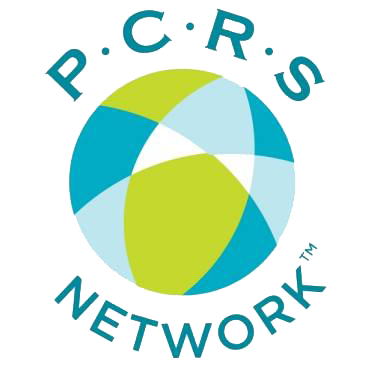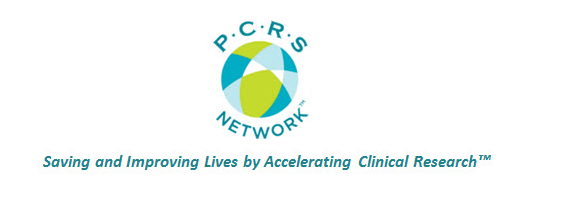For most clinical research Sites, cash flow is a struggle. Aside from being underfunded in general, frequently Sites historically do a poor job of negotiating their budgets and payment terms and managing their accounts receivables, which creates an even bigger need for financing.
Even when a Site succeeds in negotiating monthly payments, the payments are frequently late, often by months. The resulting financial gap creates significant stress on a Site’s finances and often leads to Sites losing profit and even closing their business. According to a recent study completed by Tufts Center for the Study of Drug Development, turnover rates have been getting progressively worse among more active investigators. “Operating conditions for clinical trials have noticeably worsened in recent years,” said Ken Getz, associate professor and director of sponsored research at Tufts CSDD. [i] Adjusted for inflation, he says, the typical study grant has been declining 3% a year, on average, on a per-patient basis.[ii]
To remain viable, Sites must establish a source of cash to fund their operations so they are not vulnerable to the effects of late payments.
Funding options vary depending on how long the Site has been in business and how well it has performed in the past. Some of the options available to the owners of a Site include:
- Self-funding
- Personal Line of Credit from a bank
- Credit cards
- Home equity loan
- Advances and start-up fees from Sponsors/CROs
- Loans or investments by friends and family members
- Loans or investments by professional investors
- Small Business Administration loans
- Bank Line of Credit
- Receivables financing (factoring)
New sites are particularly challenged with cash flow, since they don’t have sufficient history as a business to obtain loans from convention lenders (Banks and the Small Business Administration) and rarely present a sufficient risk/return profile to attract professional investors (Business “Angels” or Venture Capital). Consequently, they have far fewer options and usually must rely on some form of self-funding (personal savings, credit cards, loans/investment by friends and family, or factoring.
Even well established sites can have difficulty using a bank Line of Credit (LOC) because accounts receivable outstanding more than 90 days are typically excluded from the Bank’s calculation of what receivables are eligible to fund.
So, what is a Site supposed to do?
First, consider what resources realistically are available and analyze the cost of each.
Below is an example of a rating of the cost of various forms of funding that may be available to a site.
Because every Site has its own unique financial history and prospects for the future, the ranking of each option will change relative to the other options. Additionally not every option above is available to every site, so each Site must make its assessment of which options are available to them.
By far, the lowest cost option is to utilize advances and start-up fees as much as possible. This option represents zero cost to the site, so make every possible effort to obtain advances and start-up fees in the greatest amounts possible. Historically, many Sites have not enrolled a sufficient number of subjects to earn the advances paid to them. This has caused many Sponsors to reduce or even eliminate study advances altogether. However, if a Site can demonstrate good performance in the past, Sponsors are more amenable to paying a reasonable advance.
The next source of funds most easily accessed at a low cost is personal resources. These include personal savings, liquidation of other assets, personal Lines of Credit, and home equity loans. Many small Sites can survive on these sources, provided they do a good job of managing the Site’s finances, including effective accounts receivable management, which we discuss later in this article.
Two other personal resources are credit cards and loans or investments by friends and family. We do not recommend using either of those sources to fund a Site, but many Sites resort to these in the absence of other available sources. The interest rates on Credit cards are high relative to other personal sources of funding, and accelerate quickly if payments are late. No one plans to carry large balances on credit cards or to make late payments, but because the interest charges accumulate quickly, balances can easily become unmanageable. This can affect personal and business credit ratings, which makes it more difficult to obtain conventional financing.
Nearly everyone has heard a horror story of a “friends and family” loan or investment gone bad. A good rule of thumb is “If no independent party is willing to loan money or invest in the Site, leave friends and family money alone.” Unlike professional investors who do not take it personally if their investment fails, friends and family do.
Short of borrowing money, the best source of capital is the receivables you generate by conducting studies. The stage is set when a study budget and terms are agreed upon, so Sites must understand how to properly budget for a study (this will be addressed in a future article) and negotiate budgets that allow them to make a profit and with terms that get the Site paid quickly and as planned.
Negotiate monthly payments as often as possible. Monthly payments are standard in almost every industry, and should be the standard in clinical research. When monthly payments are not available, require a sufficient amount of start-up fees and a refundable study advance large enough to cover your study related costs (including costs of staffing the study) until you can realistically expect to be paid.
Many Sites accept inadequate budgets and payment terms that create cash flow (and profitability) problems for the Site. Be prepared to decline participation in studies for which a profitable budget and reasonable payment terms are not available. Not everyone is an effective negotiator, and even fewer enjoy negotiating. If that is the case with your Site, seek help from a professional negotiator.
Next, manage your accounts receivables closely. Record all revenues generated and reimbursable expenses into a system that allows you to run aging and collection reports. While Clinical Trial Management Systems (CTMS) provide the ability to record and track study visits and other study related revenues and expenses, many do not accommodate full financial management.
Full financial management includes cash flow forecasting, budgeting, aging and collection reports, Study level Profit and Loss reports, etc. When a Site does not implement full financial management, they miss billing opportunities, have difficulty collecting amounts due to them, and cannot easily determine whether they are making or losing money on studies. If the Site’s CTMS system does not effectively provide for full financial management, add an accounting system designed to track and manage accounts receivable and provide all the reporting and financial management tools necessary to manage the Site’s finances.
After implementing an effective system, the Site must actively manage their receivables to ensure all revenue and reimbursable amounts are entered, tracked, and collected. As with negotiating, not everyone is effective at accounts receivable management, particularly the collection element. In our experience, the average site misses between 7% to 13% of total study revenue by overlooking items that could be invoiced or simply not reconciling each Study account and following up to collect all items due before final study closeout. As with negotiating budgets and CTA’s, if no one at a site enjoys doing collections and is persistent and tenacious enough to effectively manage receivables, seek help from an accounts receivable and collections specialist.
If the Site is profitable, negotiates good budgets and reasonable payment terms, and still needs financing, then it can turn to conventional funding sources like a bank Line of Credit (LOC) or an SBA loan. For each of these, the Site must provide financial statements, tax returns, accounts receivables reports, and a laundry list of other documentation in order to convince the lender that they will be repaid.
Generally, the more credit worthy the Site, the more likely they can obtain an LOC directly from a Bank, which typically will be at a lower interest rate than an SBA loan and with fewer conditions attached. The most credit worthy Site’s may be able to obtain an LOC without the requirement that the owners personally guarantee the loan. In all cases, the SBA requires the owners to personally guarantee the loan.
A bank line of credit can typically be established in as little as two weeks to a month; depending on whether the Site is well prepared and organized to provide the required documentation and how familiar the bank is with the Site. The SBA 7(a) loan, which is the most common SBA loan for businesses, typically takes 60 to 90 days for approval. In either case, planning is critical. The best time to obtain an LOC or SBA loan is before the Site needs the funds. If a Site is already experiencing cash flow problems, especially if it is not currently profitable, obtaining an LOC or SBA loan becomes much more difficult and may not be approved. The rule of thumb is to always seek funding before you really need it; the funding resource is less likely to provide funding if you apply for it when it is desperately needed.
In the rare case that a Site’s growth potential and projected earnings are attractive enough to be of interest to Angel Investors or Venture Capitalists, the cost can be the highest of all forms of financing, because the rate of return required by these investors is very high and they generally require an equity position in your business. Since this source is a very unlikely option for most sites, we will not explore this further in this article.
If all other options are exhausted and a Site still requires funding, they can turn to Accounts Receivable Financing, otherwise known as “factoring.” Unlike conventional financing that is concerned with the overall financial health of the borrower, Factors specifically finance accounts receivables. Factors loan the borrower a percentage of the invoice amount, as long as the payment of the invoice is expected to be received within in payment terms and are deemed “collectable.” They charge a high interest rate (and typically a transaction fee) on the loaned balance until the invoice is paid. In most cases, the Factor becomes the payee, so Sponsors and CROs pay the Factor directly, rather than the Site. This ensures the Factor is paid by the Sponsor or CRO, so they do not have to pursue repayment from the Site. Factors typically require personal guarantees from the Site owners to reduce their risk of non-payment.
Factoring can provide cash flow at critical times, particularly when a Site has not established sufficient credibility to obtain conventional financing. As with using credit cards as a source of financing, interest charges and fees can mount quickly on factored receivables, so Sites should consider factoring as a last resort when they have no other viable financing options.
Funding a clinical research Site can be challenging. Understanding the options available to a Site is important. Applying good financial practices and planning for future needs can be the difference between success and failure of a Site.
Copyright © 2015, PCRS Network, LLC. All rights reserved worldwide.
[i] Tufts Center for the Study of Drug Development, “High Turnover and Protocol Noncompliance Continue to Plague the Global Investigative Site Landscape”, http://csdd.tufts.edu/news/complete_story/pr_ir_jan_feb_2015, January 15, 2015
[ii] Silverman, Ed, The Wall Street Journal, Pharmalot, “Why is There a High Turnover Rate Among Principal Clinical Investigators?”, http://blogs.wsj.com/pharmalot/2015/01/15/why-is-there-a-high-turnover-rate-among-principal-clinical-invesigators/, January 15, 2015


